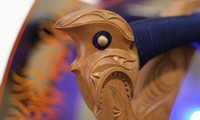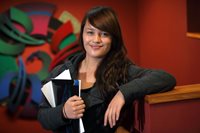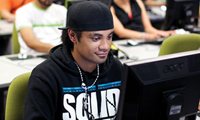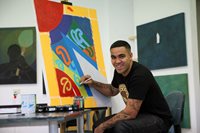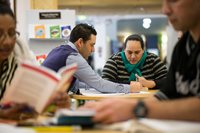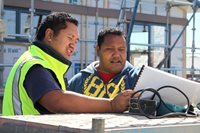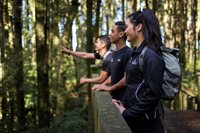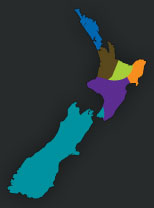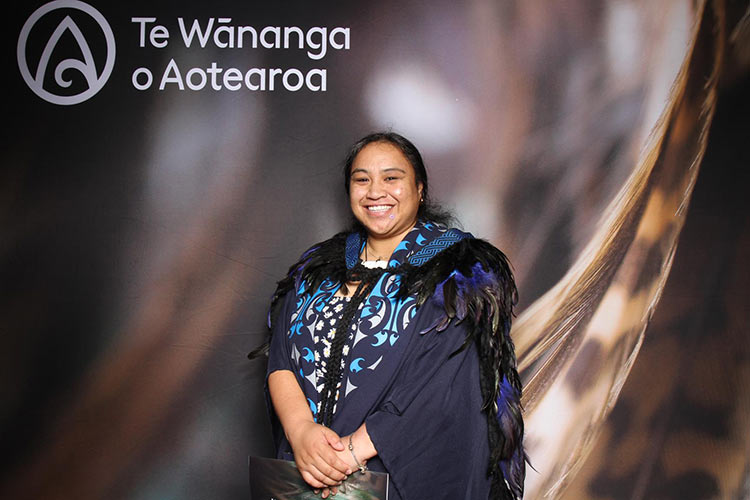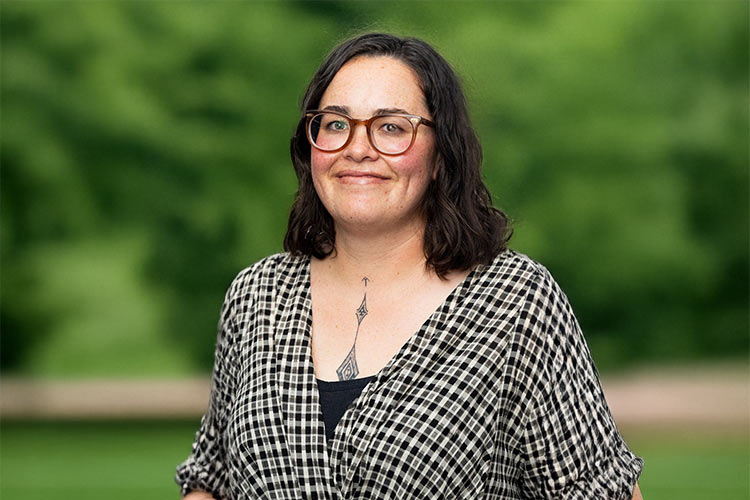Te Wānanga o Aotearoa, kaiako are using their practices to drive well-being and education based on the tauparapara Te Whare Tapu o Ngāpuhi.
Te Whare Tapu o Ngāpuhi talks of the spiritual house of the iwi, with Papatūānuku being the foundations, Ranginui the overarching ceiling and Northland's maunga holding up the whare as the poupou pillars.
However, Te Arataki Manu Kōrero kaiako Matua Ross Smith says due to what's going on behind closed doors, the story has to be more than just a tribal narrative. He says it has the power to change behaviours.
"There's too much violence and abuse in our whare, that's the current state and these issues are affecting our wellbeing and ability to believe in this text. Is this whare tapu or whare paku? What we're doing is taking our sacred house, drawing on reality and trying to reconcile the two."
The Whangarei resident’s involvement began a decade ago when working with Te Kura o Otangarei on a tikanga-a-iwi project asking tamariki; Ko wai koe? No hea koe
Rather than the children replying 'Charles St' he wanted them to walk through their pepeha to acknowledge their mountains as pou.
"I felt that if they knew they came from these mountains from this scared house, they'd be more aware of their surroundings," Ross explains.
"By climbing these mountains and documenting it, we are remembering our identity and place of belonging. It's our koha to our tipuna for leaving such a beautiful korero."
To highlight its importance further, flags were created of their maunga and a play was produced of the same name.
His most recent drive for the kaupapa has been to advocate for the building of an entrance way at the summit of the Brynderwyn range to acknowledge the arrival into Te Taitokerau.
“The aspiration of welcoming people through a visible, physical, spiritual and environmental portal is a practical assertion of a cultural and regional truth.”
Ross says it would be the utopia of all the little battles along the way, if a waharoa or tomokanga was created.
"I've had discussions with the mayor about a pou or kohatu, something that would bring awareness of the community and how Te Whare Tapu o Nga Puhi is relevant," he says.
"It's based around how can we build a stronger identity, but it has to be more than that; it's education, the justice system, tourism, the economy. It can't just stay as a tribal narrative. It has to build a sense of belonging for all who live within the walls."
With support from Te Tira Rangahau, Matua Ross, along with Te Mahinga campus Whangarei kaiako Emma King, Rose Leonard, Paora Glassie and Korotangi Kapa-Kingi, have led hikoi to various maunga as part of their rangahau to investigate how their practices – in social services, te reo me ona tikanga, whakairo and tū taua - can fit into this alternative model of keeping communities safe.
Ross says he looks forward to contributing to discussions around this kaupapa at Waitangi next week during what is recognised as one of Northlands biggest wānanga recruitment drive opportunities.
https://tehiku.nz/te-hiku-tv/haukainga/4716/nga-maunga-o-te-whare-tapu-o-ngapuhi-hevc


